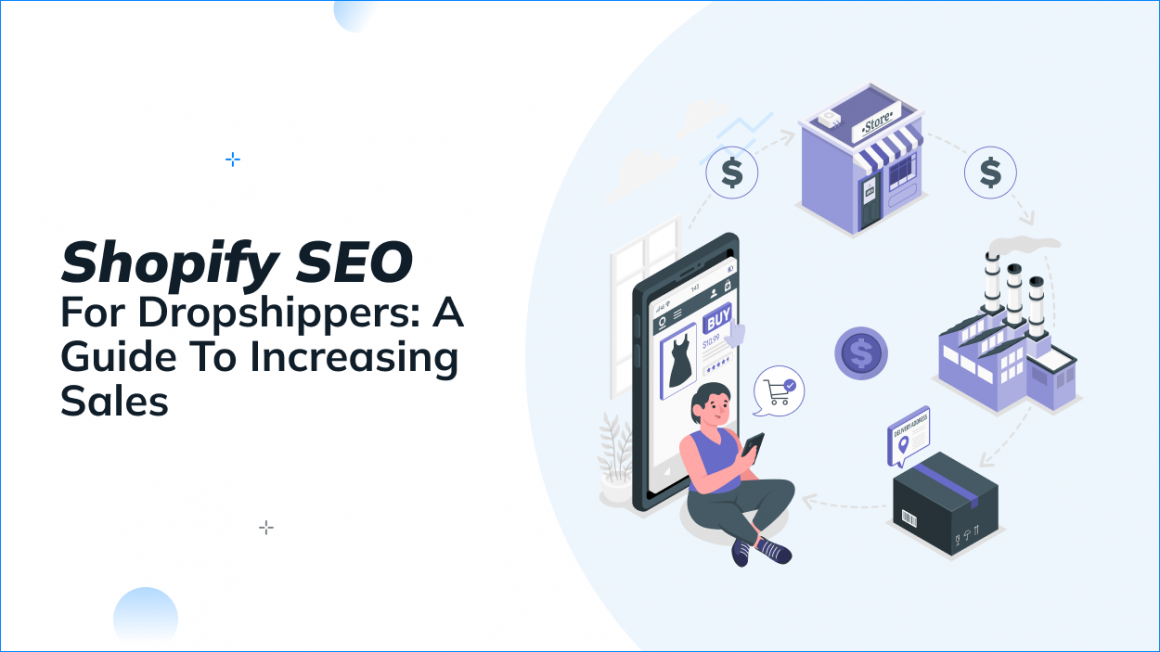In the world of eCommerce, having a Shopify store isn’t enough to drive sales if customers can’t find it. For dropshippers, optimizing your Shopify store for search engines (SEO) can make all the difference in boosting traffic and sales.
This article covers essential Shopify SEO strategies, from setting up your store to optimizing individual product listings. So, if you’re a dropshipper looking to increase visibility and conversions, here’s what you need to know about Shopify SEO for dropshippers.
Why SEO is Crucial for Dropshipping Stores
For SEO for dropshipping stores, competition is fierce. Since dropshippers often sell similar products, standing out in search engine results is key. A Shopify SEO specialist can help make the process easier, but understanding the basics will allow you to manage and improve your store’s performance independently.
SEO brings organic traffic, meaning potential customers who find you through search engines. Unlike paid ads, this traffic is free and often results in a higher ROI, making SEO one of the best investments for sustainable growth in a dropshipping business.
Key Elements of Shopify SEO for Dropshippers
1. Keyword Research for Dropshipping Products
The foundation of SEO is keyword research. To attract visitors, you need to know what terms they’re searching for. Tools like Google Keyword Planner, Ahrefs, or SEMrush can help you identify keywords related to your products.
Keywords such as “buy [product name] online” or “[product name] for sale” are typically valuable. Include keywords with lower competition but significant search volume to rank more quickly.
In addition, using long-tail keywords, like “affordable wireless earbuds for students,” will help you reach a specific audience looking for exactly what you sell.
2. Optimizing Product Pages
Each product page should be optimized with the right keywords in the title, descriptions, and meta tags. Here are some pages for the best Shopify SEO practices dropshipping:
- Title Tags: Include the main keyword and keep it under 60 characters for optimal search engine visibility.
- Meta Descriptions: Write unique, engaging descriptions that include your keywords naturally. While meta descriptions don’t impact rankings directly, they improve click-through rates.
- Product Descriptions: Avoid generic supplier descriptions and write original, compelling content that answers customer questions.
- Image Optimization: Compress images for faster loading times and include keywords in the file name and alt tags.
3. Site Structure and User Experience
A clear, well-organized site structure benefits both customers and search engines. Structure your Shopify store by categorizing products and using easy-to-navigate menus.
Ideally, no product should take more than three clicks to find. Simplified navigation reduces bounce rates, a metric Google uses to determine site relevance.
4. Optimizing for Mobile
With mobile traffic on the rise, mobile optimization is essential. Ensure that your Shopify store’s theme is mobile-friendly, providing a seamless browsing experience.
A Shopify SEO specialist can help you optimize for mobile, but Shopify’s built-in mobile responsiveness and various apps make it easy to adjust.
5. Page Speed Optimization
Fast loading speeds lead to better user experiences and higher Google rankings. Compress images, minimize redirects, and limit apps that slow down your site. Shopify offers tools to help measure and improve page speed, which is essential for SEO for dropshipping stores.
6. Blogging and Content Marketing
Content marketing is an effective SEO strategy that attracts new visitors. Write blog posts about topics related to your products, industry trends, or customer questions.
For example, a dropshipping store selling fitness gear could feature a blog with workout tips and product guides. Including internal links to your products in blog posts also improves SEO.
7. Backlink Building
Backlinks signal to search engines that your site is credible. Reach out to relevant bloggers, influencers, and industry sites to see if they’d be willing to link to your products or content. Even better, create valuable resources or guides on your site that others would naturally want to link to.
8. Using Shopify Apps for SEO
Shopify offers a wide range of SEO apps to streamline and enhance SEO processes, making it easier for dropshippers to apply best practices.
Apps like SEO Booster and Plug in SEO can help with title tag optimization, alt text for images, and broken link detection. They’re excellent tools for beginners and experienced users alike to improve SEO efficiently.
Star SEO Techniques for Dropshipping: Star Schema & Rich Snippets
Google’s rich snippets can increase click-through rates by adding extra information to your search listing, such as price, ratings, and availability.
Schema markup, which can be added via apps or Shopify’s custom code editor, helps Google understand your store’s structure. This technique, popular among Shopify SEO specialists, can give your dropshipping store an advantage in search results.
The Difference Shopify SEO Can Make for Dropshippers
The best Shopify SEO practices dropshipping not only improve your store’s search engine rankings but also create a positive user experience that increases conversions. By focusing on both on-page and technical SEO, drop shippers can steadily increase organic traffic, leading to more consistent sales over time.
The Final Thoughts
The right Shopify SEO strategy can make your dropshipping store stand out in a competitive market. From keyword research and on-page optimization to advanced tactics like rich snippets, these techniques provide a solid foundation for growing your online store.
Consider working with a Shopify SEO specialist to help navigate the nuances, especially as your store grows. By focusing on Shopify SEO for dropshippers and implementing these best practices, you’re setting your store up for long-term success in an ever-evolving digital landscape.











